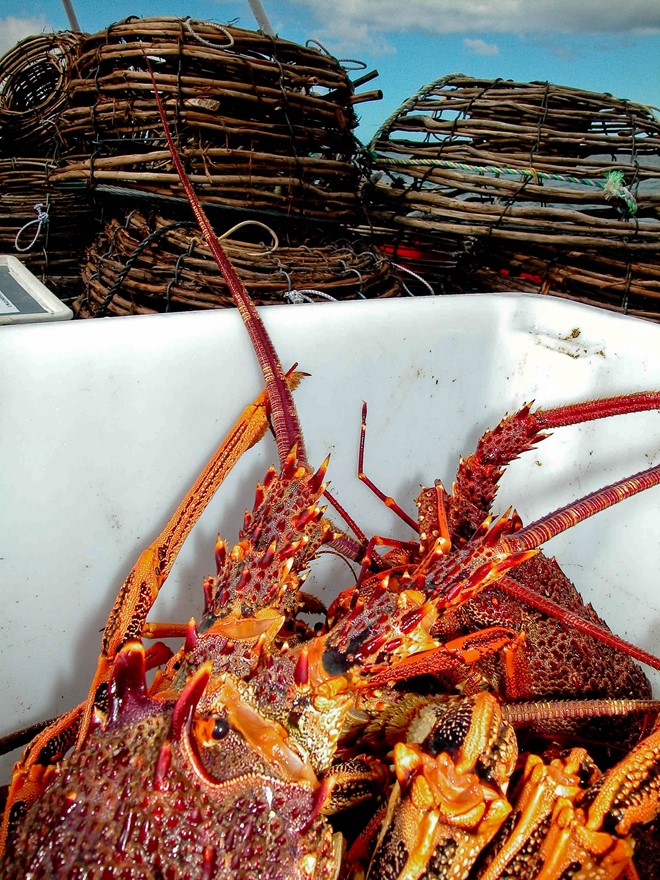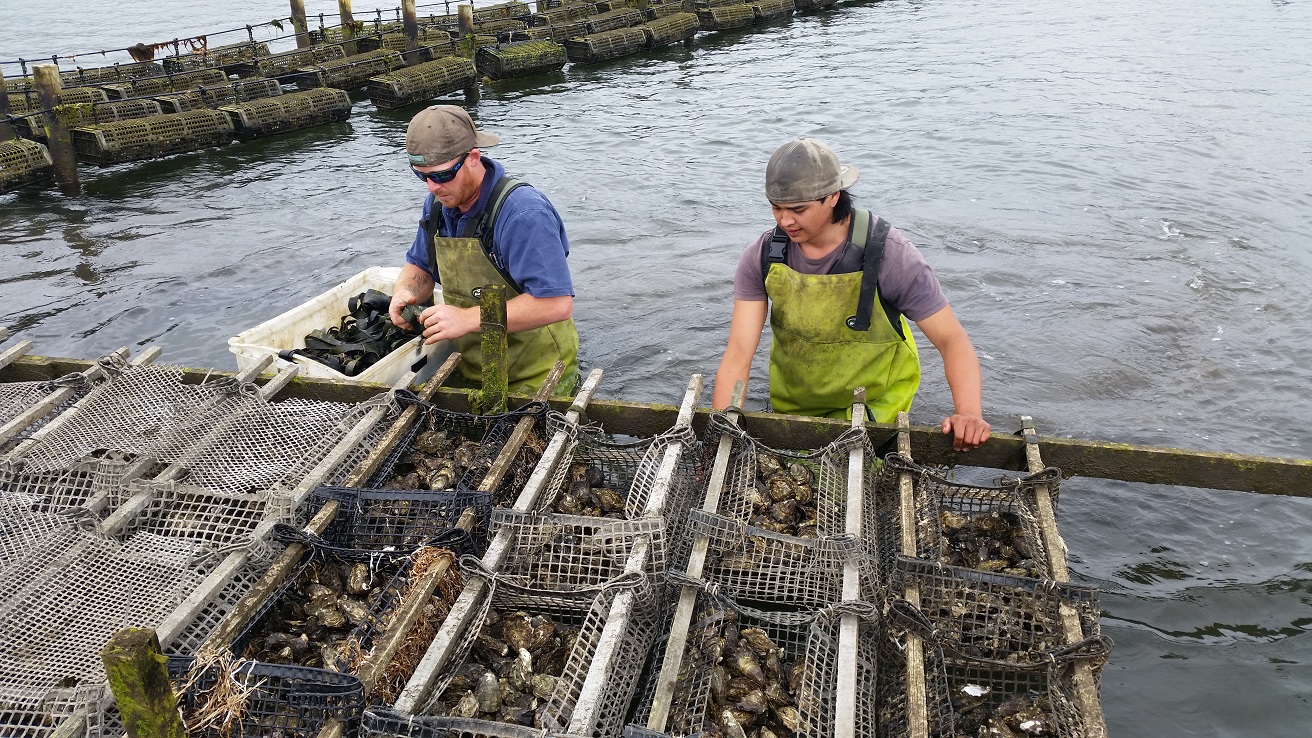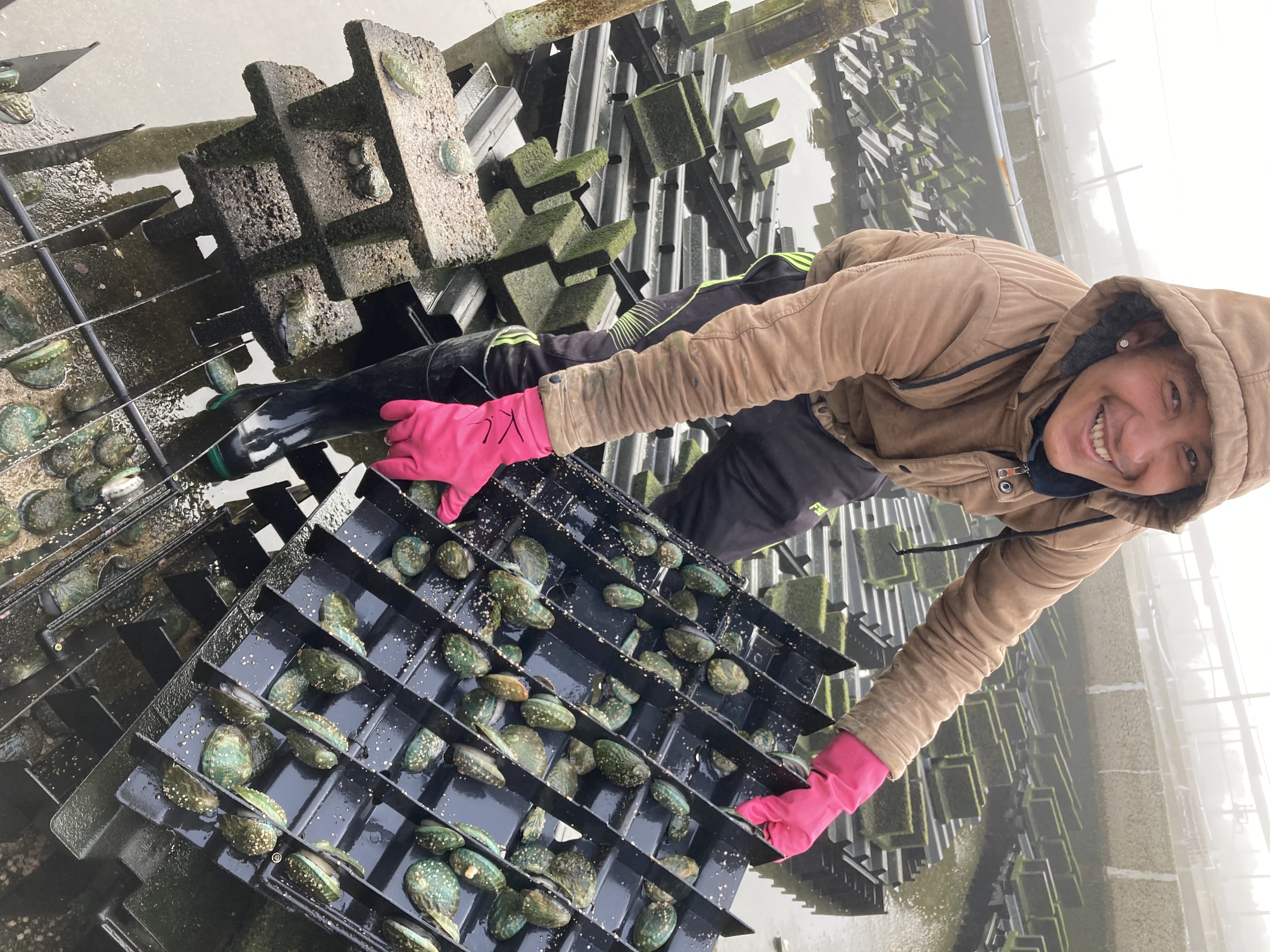
Tasmania’s key fisheries and aquaculture sectors contributed just over $800 million towards the state’s economy in 2020-21 according to a new IMAS study, which also identifies challenges and growth opportunities that will maximise the value of the state's marine resource industries.
The Tasmanian Fisheries and Aquaculture Industry: Economic Contributions report assessed the state’s six key sectors, including salmon aquaculture, rock lobster and scalefish fisheries, wild abalone and abalone aquaculture, and Pacific Oyster aquaculture. It updates findings from pre-COVID data in 2018-19.
"Overall, we found that the economic value of Tasmania's fisheries and aquaculture sectors dropped from $878 million in 2018-19 to $802 million in 2020-21," IMAS economist and project leader Dr Steven Rust said.
This is calculated by measuring gross value added (GVA), which is the value of an industry’s goods and services minus production costs. This includes direct GVA, like catch, production and seafood exports, and indirect GVA from households and businesses spending income in other industries.
“Household income, including money earned by fishers directly and by others who benefit from local seafood sectors, also reduced from $443 million to $412 million between these years,” Dr Rust said.
“This reduction in economic value and household income was most likely the result of export market access issues that arose at around the same time as the COVID-19 pandemic, which impacted many Australian commodities."
 Despite these reductions, the total direct and indirect employment across all fisheries and aquaculture sectors increased marginally, from 6,558 people to 6,600 in two years. Indirect employment includes associated industries like boat maintenance and fish feed supplies.
Despite these reductions, the total direct and indirect employment across all fisheries and aquaculture sectors increased marginally, from 6,558 people to 6,600 in two years. Indirect employment includes associated industries like boat maintenance and fish feed supplies.
Dr Rust said these findings are important for understanding local economic returns from the state’s seafood industries, both through seafood sales into Tasmanian markets and valuable national and international export markets.
“Monitoring these statistics and how they change over time helps identify challenges and opportunities for growth. This is an important step that allows State Government marine resource managers to develop strategies that will maximise the value of these industries to Tasmania."
Despite the overall decline in economic value across all sectors, Dr Rust said the Pacific Oyster and abalone aquaculture industries had strong market-driven growth between 2018-19 and 2020-21.
"We found the economic value of Pacific Oyster aquaculture increased from $35 million to $42 million during those two years, while abalone aquaculture grew in value from $7 million to $11 million. This was because producers continued to improve the market value of harvests, which are sold to interstate or export markets and therefore contribute to bringing money into the Tasmanian economy.
"Gain in these sectors was able to offset impacts from supply chain issues elsewhere in Tasmanian aquaculture due to the COVID-19 pandemic.”
Dr Rust said the economic value of both salmon aquaculture and the rock lobster fishery reduced during the two-year period.
"The value of salmon aquaculture dropped from $650 million to $639 million due to the effects of higher logistical costs and supply chain issues over 2020-21.
“But despite these factors, the contribution of primary production remained resilient, while direct and indirect employment increased from 5,003 people to 5,188.
"The rock lobster fishery also dropped in economic value from $100 million to $51 million, with employment decreasing from 611 people to 444. The value of wild abalone reduced from $81 million to $53 million.
"These major wild fisheries continue to be affected by challenging conditions, particularly relating to export markets.”
In more positive news, the scalefish fishery marginally increased in economic value from $5 million to $6 million.
The full report is available here.
This report does not include the contribution of seafood processing activities to the Tasmanian economy.
The Department of Natural Resources and Environment Tasmania provided funding for this project through the Sustainable Marine Research Collaboration Agreement between the Tasmanian Government and the University of Tasmania.
Images:
Published 27 March 2024